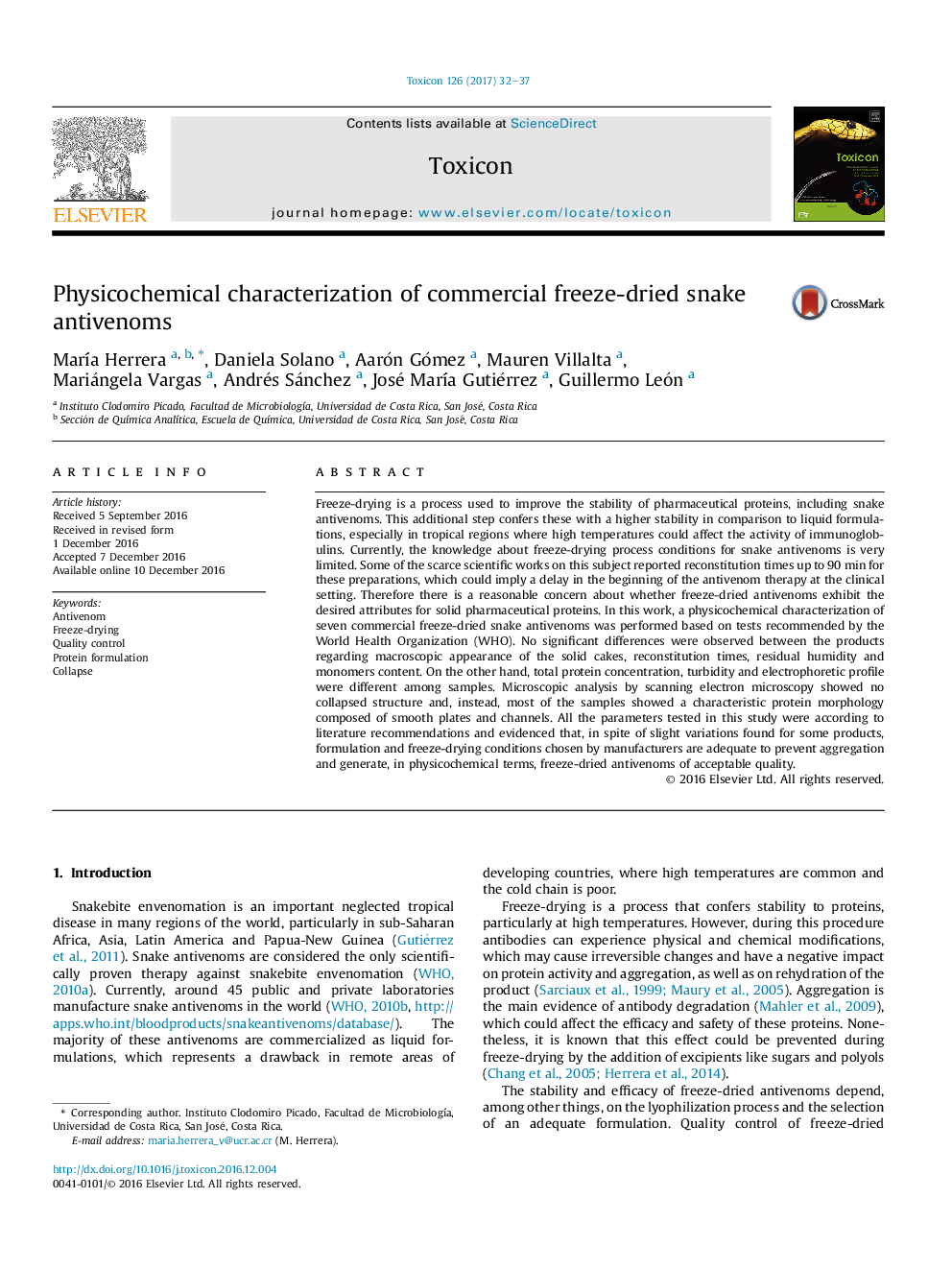| Article ID | Journal | Published Year | Pages | File Type |
|---|---|---|---|---|
| 5519379 | Toxicon | 2017 | 6 Pages |
â¢Antivenoms were different in protein concentration and turbidity, and varied slightly in SDS-PAGE profile.â¢SEM analysis showed no microscopic collapse of samples, suggesting adequate freeze-drying process conditions.â¢All the formulations analyzed met the quality control requirements established by WHO regulations.
Freeze-drying is a process used to improve the stability of pharmaceutical proteins, including snake antivenoms. This additional step confers these with a higher stability in comparison to liquid formulations, especially in tropical regions where high temperatures could affect the activity of immunoglobulins. Currently, the knowledge about freeze-drying process conditions for snake antivenoms is very limited. Some of the scarce scientific works on this subject reported reconstitution times up to 90Â min for these preparations, which could imply a delay in the beginning of the antivenom therapy at the clinical setting. Therefore there is a reasonable concern about whether freeze-dried antivenoms exhibit the desired attributes for solid pharmaceutical proteins. In this work, a physicochemical characterization of seven commercial freeze-dried snake antivenoms was performed based on tests recommended by the World Health Organization (WHO). No significant differences were observed between the products regarding macroscopic appearance of the solid cakes, reconstitution times, residual humidity and monomers content. On the other hand, total protein concentration, turbidity and electrophoretic profile were different among samples. Microscopic analysis by scanning electron microscopy showed no collapsed structure and, instead, most of the samples showed a characteristic protein morphology composed of smooth plates and channels. All the parameters tested in this study were according to literature recommendations and evidenced that, in spite of slight variations found for some products, formulation and freeze-drying conditions chosen by manufacturers are adequate to prevent aggregation and generate, in physicochemical terms, freeze-dried antivenoms of acceptable quality.
